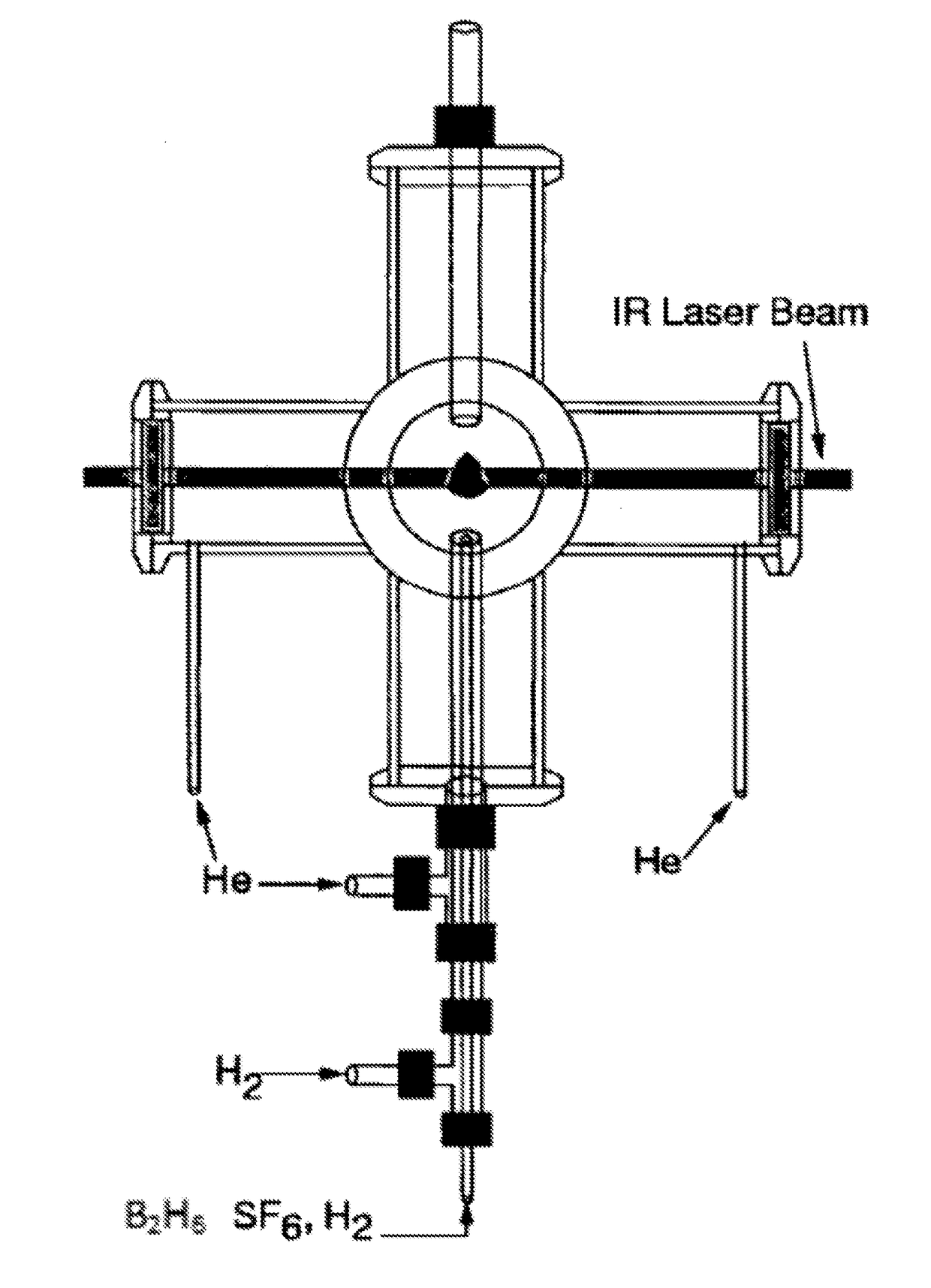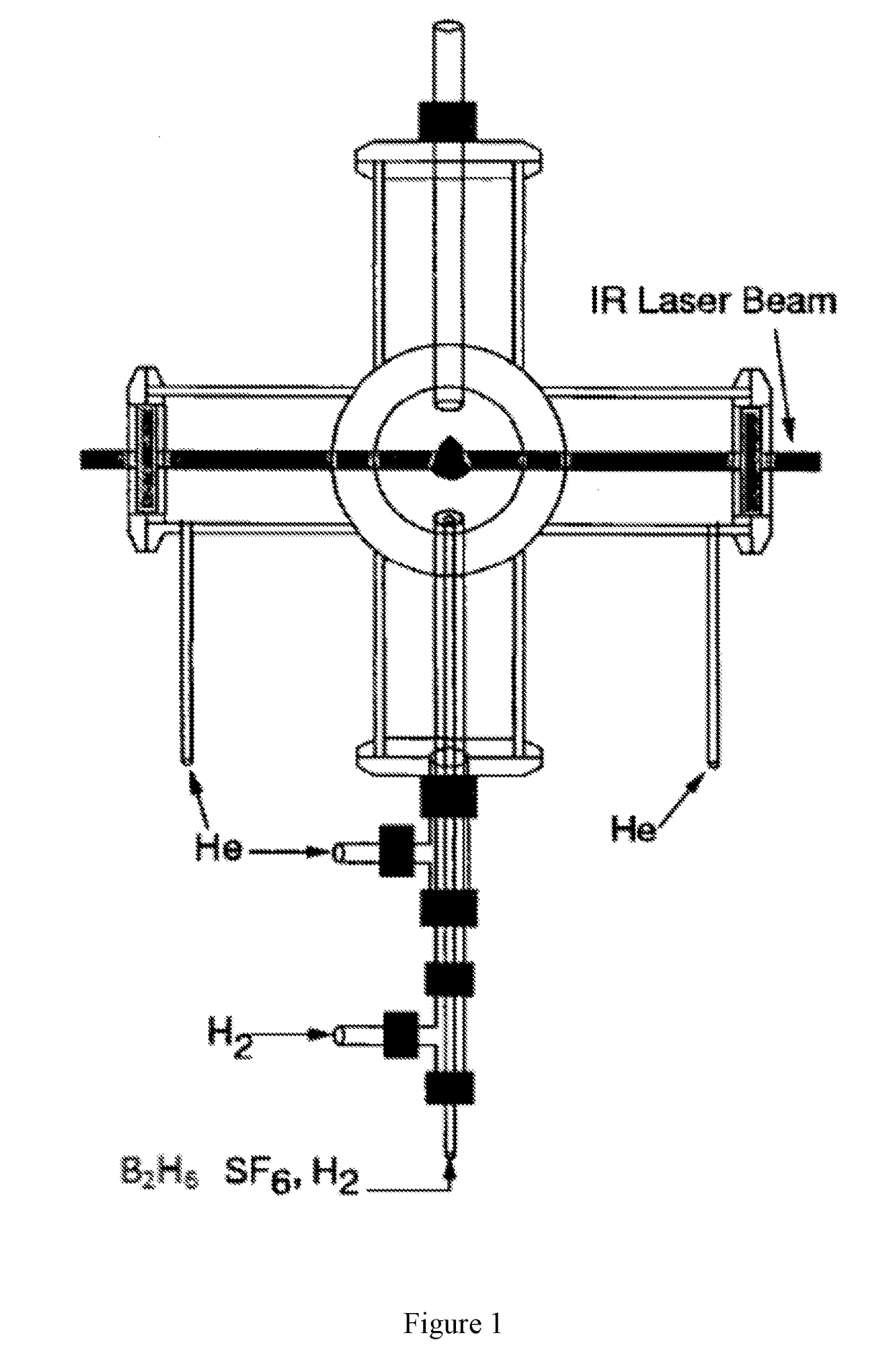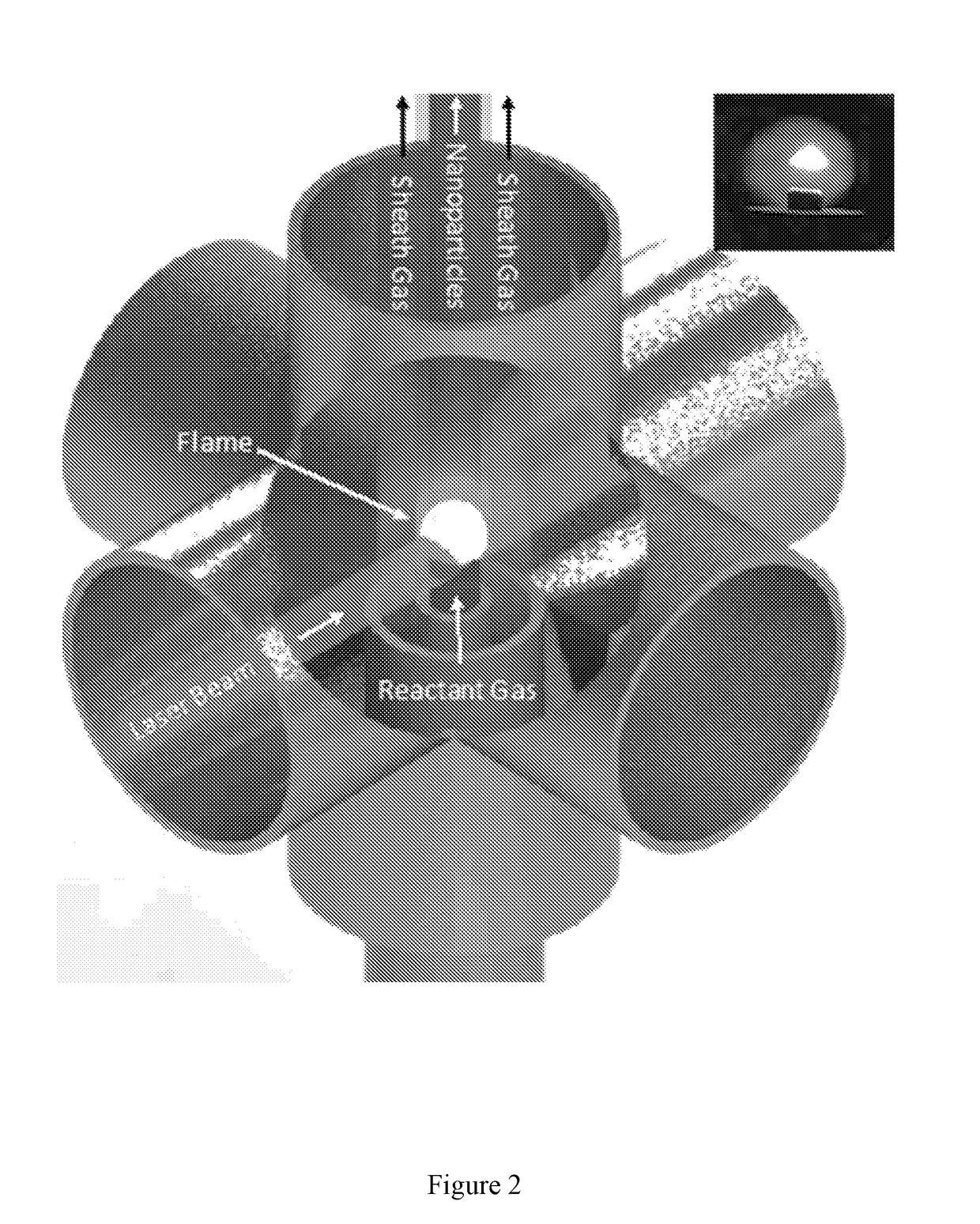Boron nanoparticle compositions and methods for making and using the same
a technology of boron nanoparticles and compositions, applied in the direction of boron, hydrogen production, chemistry apparatuses and processes, etc., can solve the problems of metal hydrolysis usually decreasing with time, boron is generally unreactive with water, and the reaction rate of metal hydrolysis is usually below 2500 k
- Summary
- Abstract
- Description
- Claims
- Application Information
AI Technical Summary
Benefits of technology
Problems solved by technology
Method used
Image
Examples
example 1
[0079]This example provides a description of methods of making and characterization boron nanoparticles and using boron nanoparticles to generate hydrogen.
[0080]Boron Nanoparticle Synthesis. CO2 laser induced pyrolysis of reactant gases is a continuous and single step process to synthesize both pure and alloyed powder nanoparticles. We used CO2 laser-induced pyrolysis of diborane to prepare BNPs at a rate of ˜210 mg / h. Production rate depended upon diborane concentration in the feed gas stream. FIG. 1 shows a schematic of the laser pyrolysis reactor. A continuous CO2 laser beam (up to 100 W) was used to pyrolyze diborane at the center of a 6-way cross reactor. Under typical operating conditions, a stream containing 142 standard cubic centimeters per minute (sccm) of diborane gas mixture (5% diborane in UHP hydrogen, Voltaix LLC; 7.1 sccm diborane) and 5.3 sccm sulfur hexafluoride (SF6, technical grade), as a photosensitizer. This gas stream entered the reactor through a central inle...
example 2
[0104]This example provides a description of methods of making and characterizing boron nanoparticles and using boron nanoparticles to generate hydrogen.
[0105]FIGS. 17 and 18 show hydrogen generation using various amounts of boron nanoparticles. The boron nanoparticles were prepared as described in Example 1. The hydrogen generation experiments were carried out as described in Example 1. In this case, hydrogen generation was observed over time, rather than occurring instantaneously.
[0106]All the experiments were carried out in an inert atmosphere (N2) in a custom-designed cylindrical vessel (≈50 mL internal volume). The BNPs (0, 1.5, 3, 4, 6, 7, 10, 15, 20 and 25 mmol) and sodium borohydride (2 mmol) were weighed in a glovebox, added to the vessel, and connected to an inverted graduated cylinder of water to measure the volume of gas generated. Two mL of DI water (or deuterated water) was used in each experiment. Hydrogen generation versus time were measured for each experiment and p...
PUM
| Property | Measurement | Unit |
|---|---|---|
| size | aaaaa | aaaaa |
| wavelength | aaaaa | aaaaa |
| temperatures | aaaaa | aaaaa |
Abstract
Description
Claims
Application Information
 Login to View More
Login to View More - R&D
- Intellectual Property
- Life Sciences
- Materials
- Tech Scout
- Unparalleled Data Quality
- Higher Quality Content
- 60% Fewer Hallucinations
Browse by: Latest US Patents, China's latest patents, Technical Efficacy Thesaurus, Application Domain, Technology Topic, Popular Technical Reports.
© 2025 PatSnap. All rights reserved.Legal|Privacy policy|Modern Slavery Act Transparency Statement|Sitemap|About US| Contact US: help@patsnap.com



